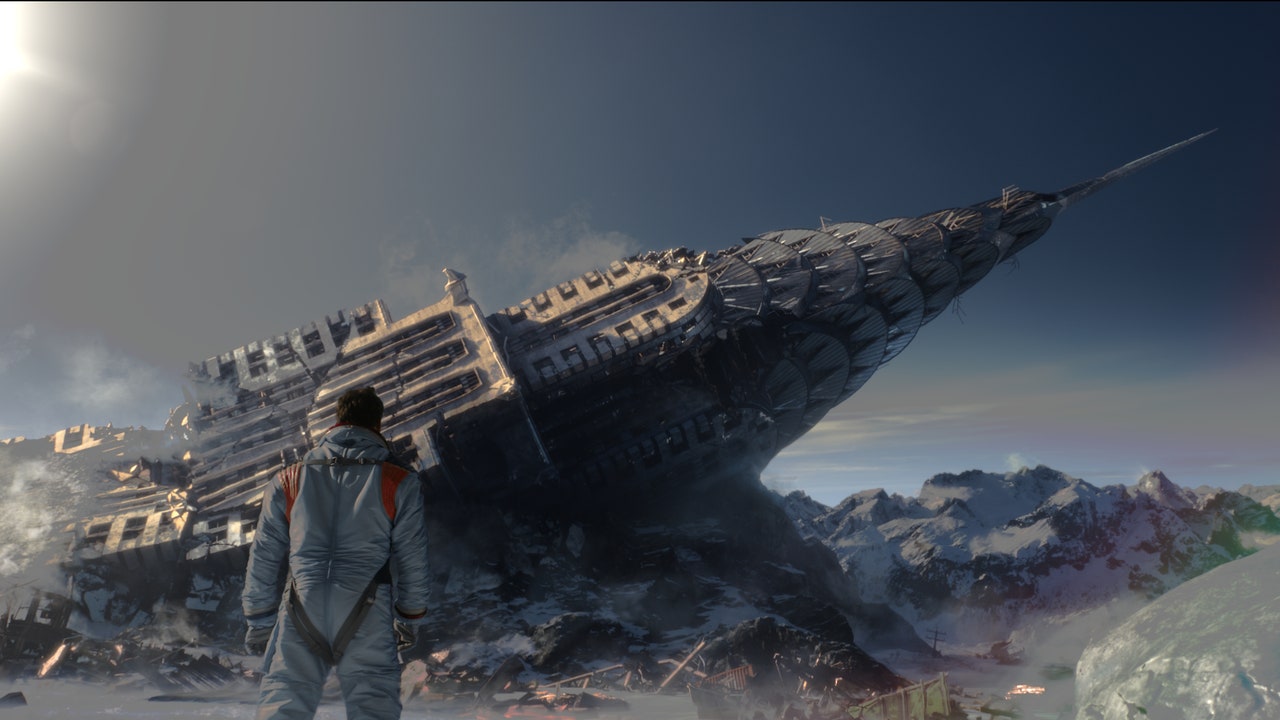The “Real” Conspiracy Theories Behind Roland Emmerich’s ‘Moonfall’

The Hollow Moon concept has been fueled by fanciful fiction, and just enough misconstrued science to keep things plausible. In his 1901 novel The First Men in the Moon, H.G. Wells imagined the rocky orb as a hive for enormous ant-like aliens known as Selenites. Edgar Rice Burroughs and Isaac Asimov each took a shot at imagining a dome-like moon that’s desolate on the outside, but brimming with civilization within.
Then came a kernel of truth. In the 1970s, NASA’s Apollo program recorded a series of quakes on the moon, some lasting significantly longer than quakes on Earth. Clive R. Neal, associate professor of civil engineering and geological sciences at the University of Notre Dame, describes it this way on NASA’s website: “The moon was ringing like a bell.” The explanation? The water that soaks into the Earth serves as a kind of shock-absorber, and the comparatively dry, stiff moon amplifies the pulses instead. But never mind that—bells are hollow! The introduction of that phrase galvanized the preposterous.
Over the decades, fringe theories abounded that the moon could be a sentinel for extra-terrestrials who monitor us from above. Some suggested it may even be an armored spacecraft disguised as a solar body. The 2005 book Who Built the Moon postulates that futuristic time-traveling earthlings constructed it as a means of tracking the evolution of life without disrupting its course.
“That was probably the first thing I read. And then I read a slew of other books, because in every conspiracy theory, there’s hundreds of books,” says Emmerich, who cowrote the script with Harald Kloser, his longtime music composer, and Spenser Cohen (2018’s Extinction.) “But at the end we decided to create our own theory because all the theories they were proposing in that book, or in other books… we didn’t quite believe.”


